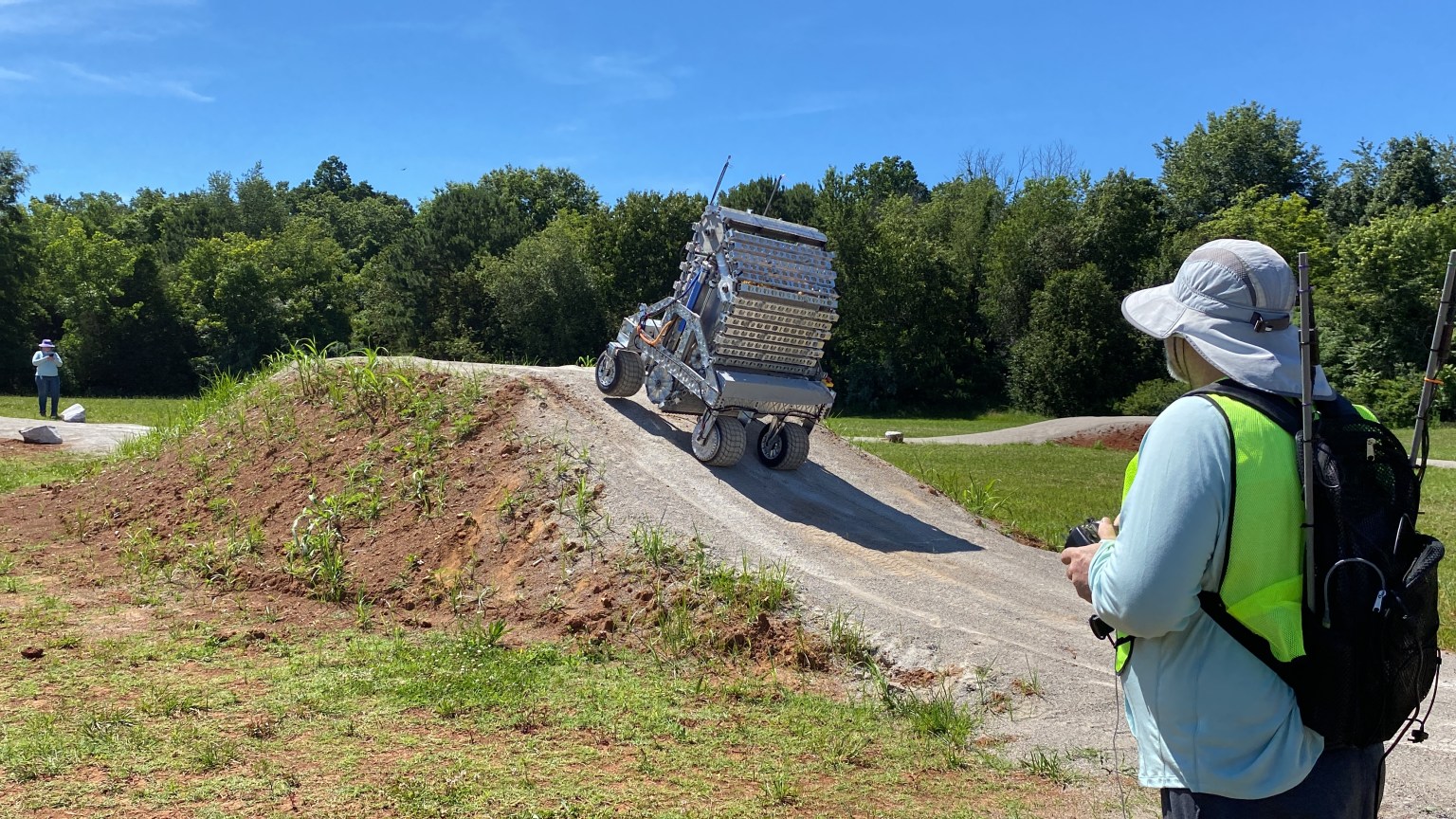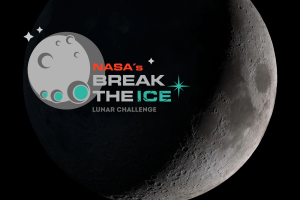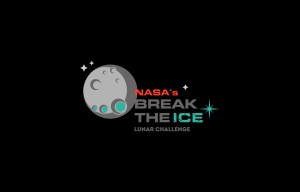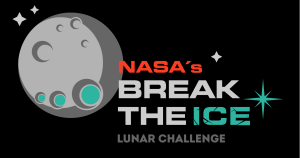By Savannah Bullard
Editor’s note: This web article was updated June 17, 2024 to correct the name of Terra Engineering’s rover.
After two days of live competitions, two teams from southern California are heading home with a combined $1.5 million from NASA’s Break the Ice Lunar Challenge.
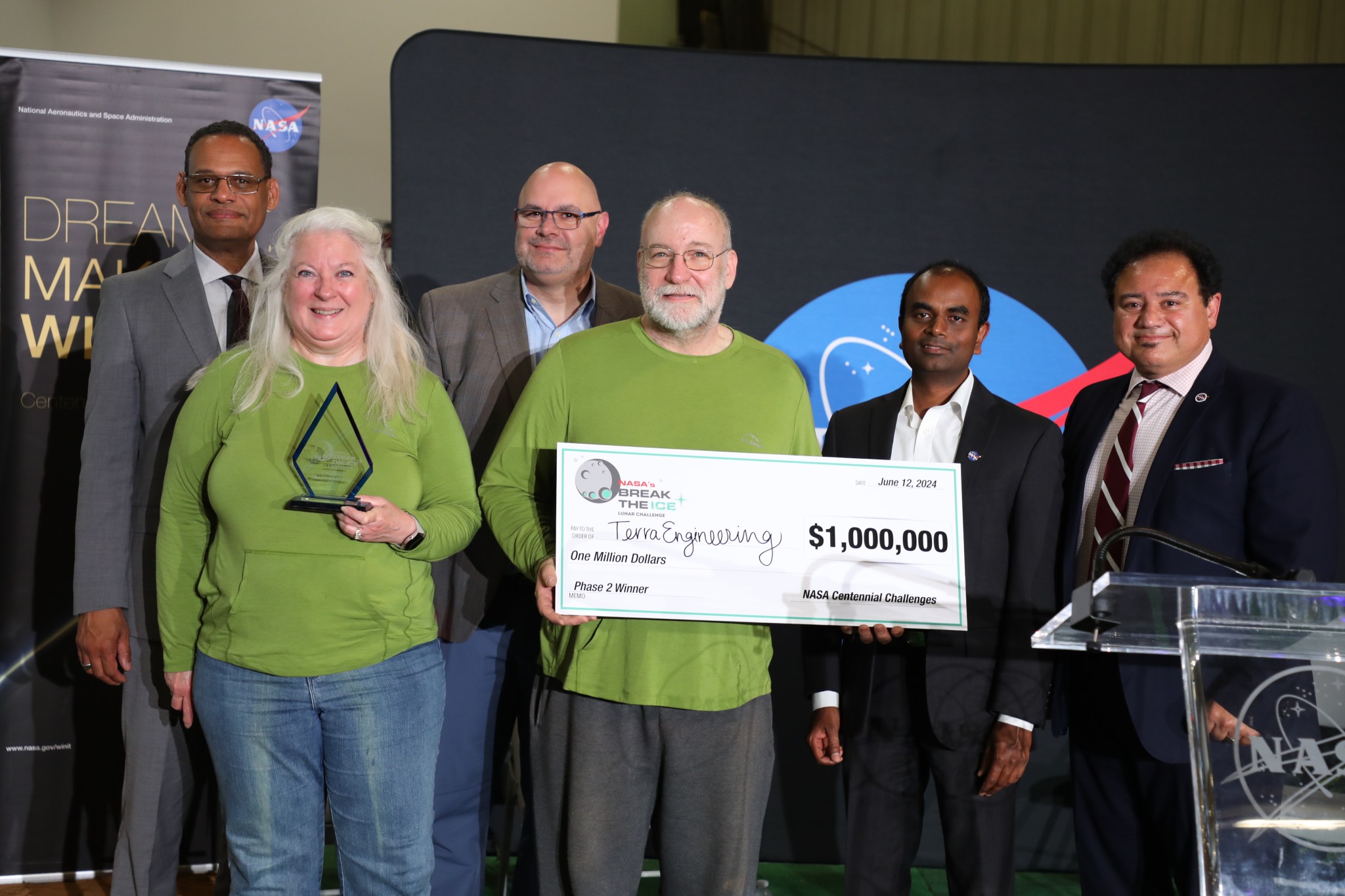
Since 2020, competitors from around the world have competed in this challenge with the common goal of inventing robots that can excavate and transport the icy regolith on the Moon. The lunar South Pole is the targeted landing site for crewed Artemis missions, so utilizing all resources in that area, including the ice within the dusty regolith inside the permanently shadowed regions, is vital for the success of a sustained human lunar presence.
On Earth, the mission architectures developed in this challenge aim to help guide machine design and operation concepts for future mining and excavation operations and equipment for decades.
“Break the Ice represents a significant milestone in our journey toward sustainable lunar exploration and a future human presence on the Moon,” said Joseph Pelfrey, Center Director of NASA’s Marshall Space Flight Center. “This competition has pushed the boundaries of what is possible by challenging the brightest minds to devise groundbreaking solutions for excavating lunar ice, a crucial resource for future missions. Together, we are forging a future where humanity ventures further into the cosmos than ever before.”
The final round of the Break the Ice competition featured six finalist teams who succeeded in an earlier phase of the challenge. The competition took place at the Alabama A&M Agribition Center in Huntsville, Alabama, on June 11 and 12, where each team put their diverse solutions to the test in a series of trials, using terrestrial resources like gravity-offloading cranes, concrete slabs, and a rocky track with tricky obstacles to mimic the environment on the Moon.
The husband-and-wife duo of Terra Engineering took home the top prize for their “Fracture” rover. Team lead Todd Mendenhall competed in NASA’s 2007 Regolith Excavation Challenge, facilitated through NASA’s Centennial Challenges, which led him and Valerie Mendenhall to continue the pursuit of solutions for autonomous lunar excavation.
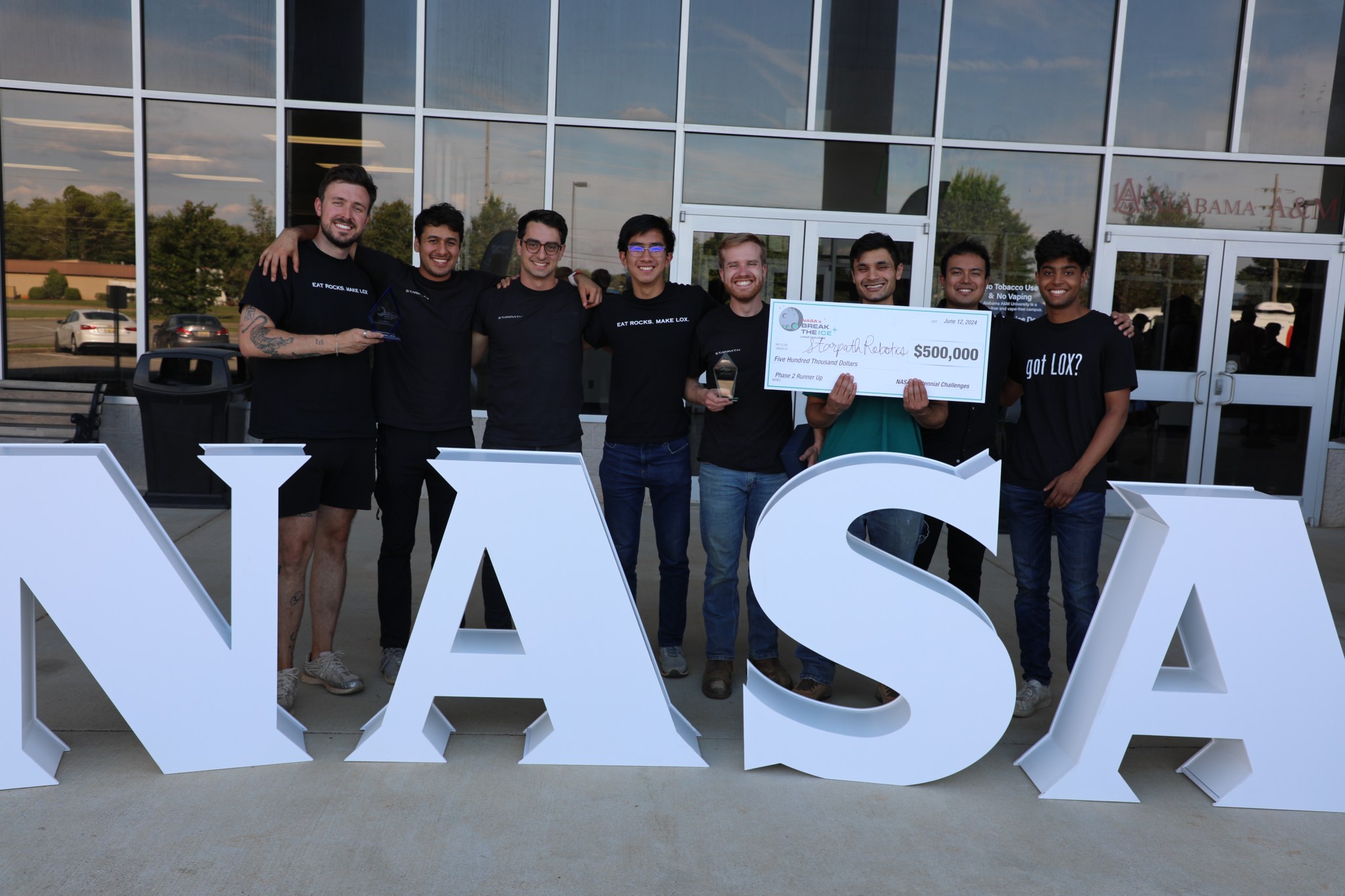
A small space hardware business, Starpath Robotics, earned the second-place prize for its four-wheeled rover that can mine, collect, and haul material. The team, led by Saurav Shroff and lead engineer Mihir Gondhalekar, developed a robotic mining tool that features a drum barrel scraping mechanism for breaking into the tough lunar surface. This allows the robot to mine material quickly and robustly without sacrificing energy.
“This challenge has been pivotal in advancing the technologies we need to achieve a sustained human presence on the Moon,” said Kim Krome, the Acting Program Manager for NASA’s Centennial Challenges. “Terra Engineering’s rover, especially, bridged several of the technology gaps that we identified – for instance, being robust and resilient enough to traverse rocky landscapes and survive the harsh conditions of the lunar South Pole.”
Beyond the $1.5 million in prize funds, three teams will be given the chance to use Marshall Space Flight Center’s thermal vacuum (TVAC) chambers to continue testing and developing their robots. These chambers use thermal vacuum technologies to create a simulated lunar environment, allowing scientists and researchers to build, test, and approve hardware for flight-ready use.
The following teams performed exceptionally well in the excavation portion of the final competition, earning these invitations to the TVAC facilities:
- Terra Engineering (Gardena, California)
- Starpath Robotics (Hawthorne, California)
- Michigan Technological University – Planetary Surface Technology Development Lab (Houghton, Michigan)
“We’re looking forward to hosting three of our finalists at our thermal vacuum chamber, where they will get full access to continue testing and developing their technologies in our state-of-the-art facilities,” said Break the Ice Challenge Manager Naveen Vetcha, who supports NASA’s Centennial Challenges through Jacobs Space Exploration Group. “Hopefully, these tests will allow the teams to take their solutions to the next level and open the door for opportunities for years to come.”
NASA’s Break the Ice Lunar Challenge is a NASA Centennial Challenge led by the agency’s Marshall Space Flight Center, with support from NASA’s Kennedy Space Center in Florida. Centennial Challenges are part of the Prizes, Challenges, and Crowdsourcing program under NASA’s Space Technology Mission Directorate. Ensemble Consultancy supports challenge competitors. Alabama A&M University, in coordination with NASA, supports the final competitions and winner event for the challenge.
For more information on Break the Ice, visit:
Jonathan Deal
Marshall Space Flight Center, Huntsville, Ala.
256.544.0034
jonathan.e.deal@nasa.gov


























